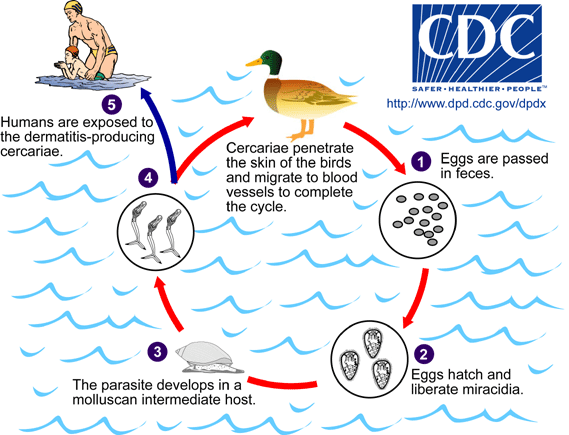
Gigantobilharzia sp.
Platyhelminthes
Gigantobilharzia sp. is a trematode whose initial host is the slug-like Japanese Bubble Snail. Both species are introduced to San Francisco Bay. Birds are the final host, but cercarial stages released from the snails can cause cercarial dermatitis 'Swimmer's Itch'. Gigantobilharzia spp. are digenean trematodes, obligate parasites, whose life-cycle includes early stages (eggs, rediae, cercariae) in snails, usually freshwater species. However, an epidemic of swimmers itch in San Francisco Bay was traces to the cercaria of Gigantobilharzia sp., parasites of the bubble snail Haloa (=Haminoea) japonica). Adult stages of the parasite probably live in the digestive tracts of aquatic birds. As a parasite of birds, one can expect that its adult stages have a potential for wide natural dispersal. The eggs are probably contained in feces dropped by birds in the intertidal zone. The eggs hatch into rediae, which develop in the snail's digestive gland, and then metamoprhose into cercariae. When infected snails are eaten by birds, the metacercariae grow in the final host's digestive tract and and reproduce. The cercariae that were found associated with Haloa japonica in San Francisco resembled those of Giganobilharzia huttoni, infecting H. guadalupensis in Florida, the only schistostome trematode known to infect an opisthobranch snail. The t\ other members of the genus infect freshwater pulmonate snails